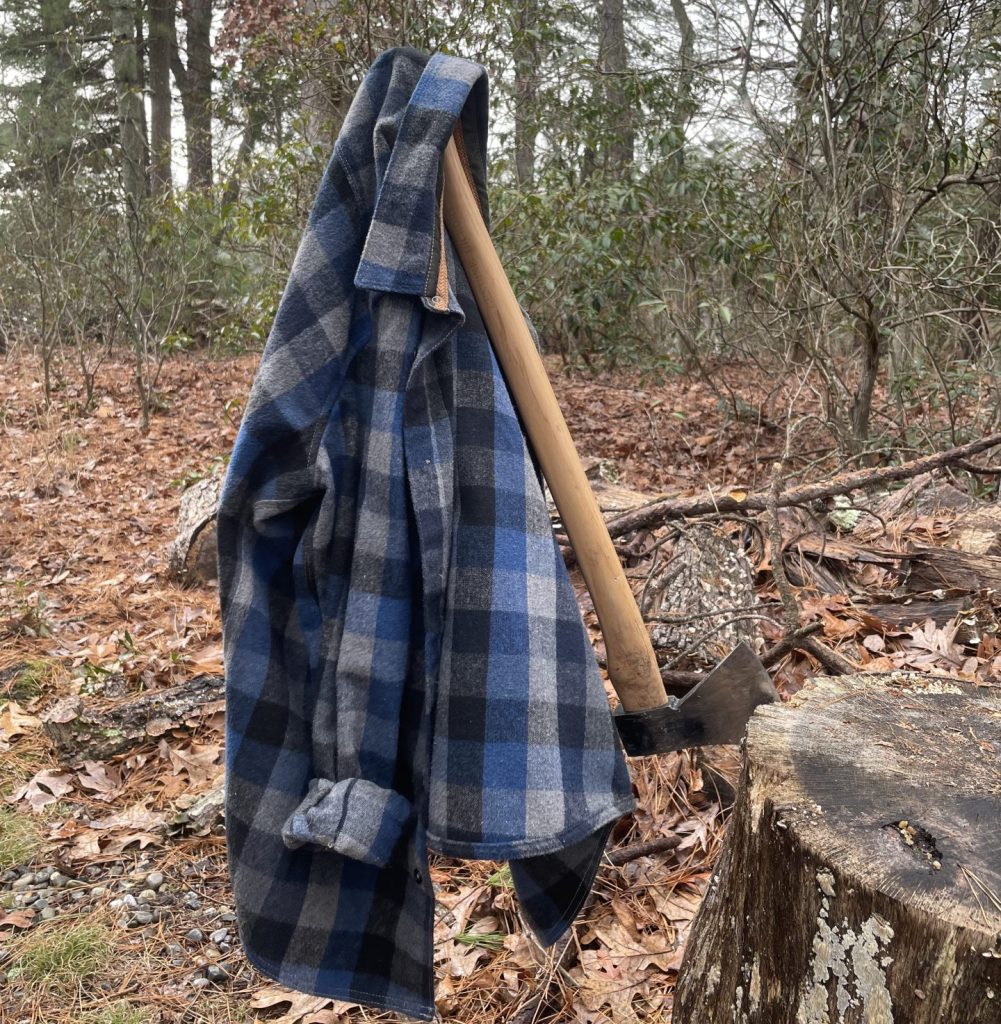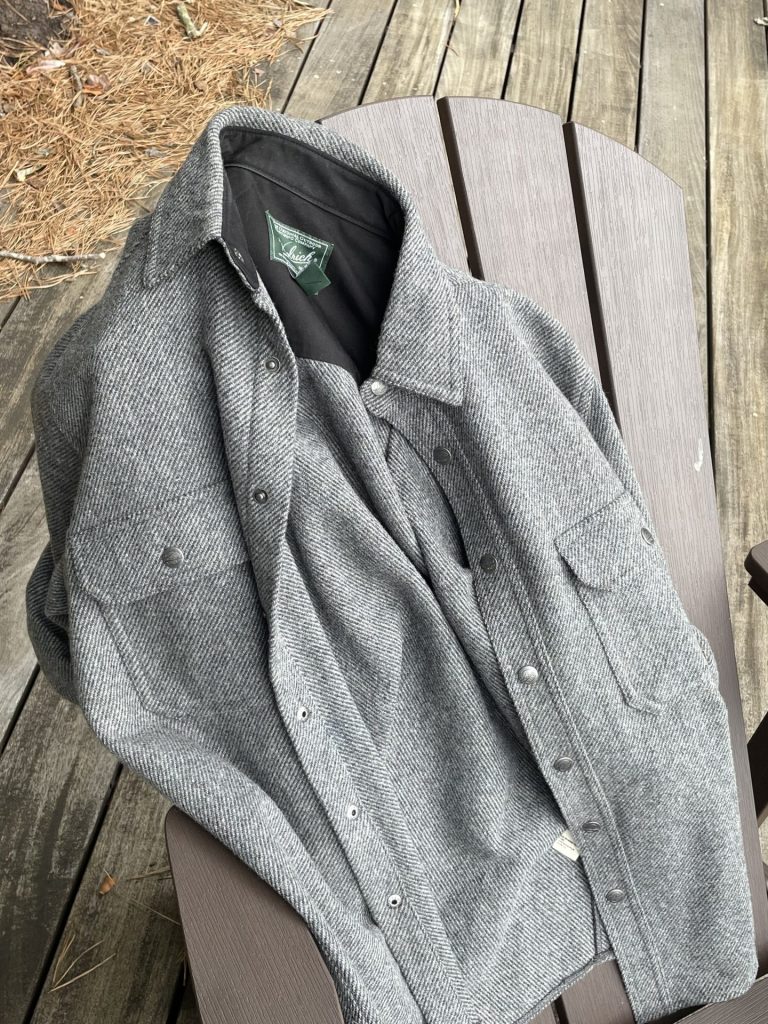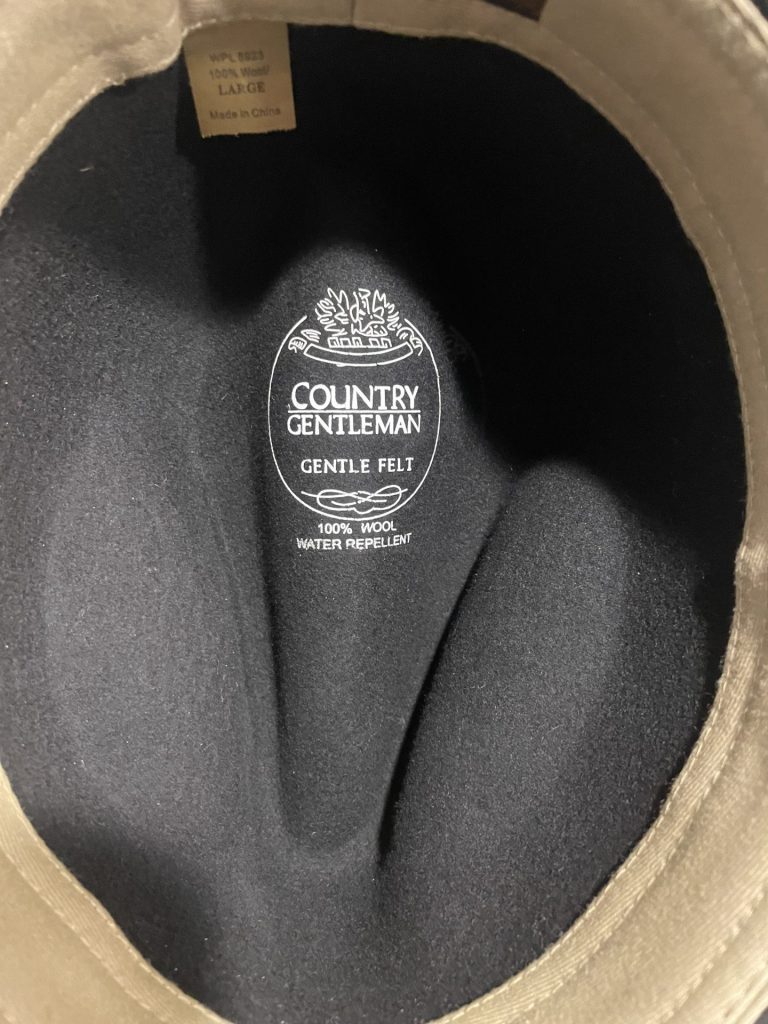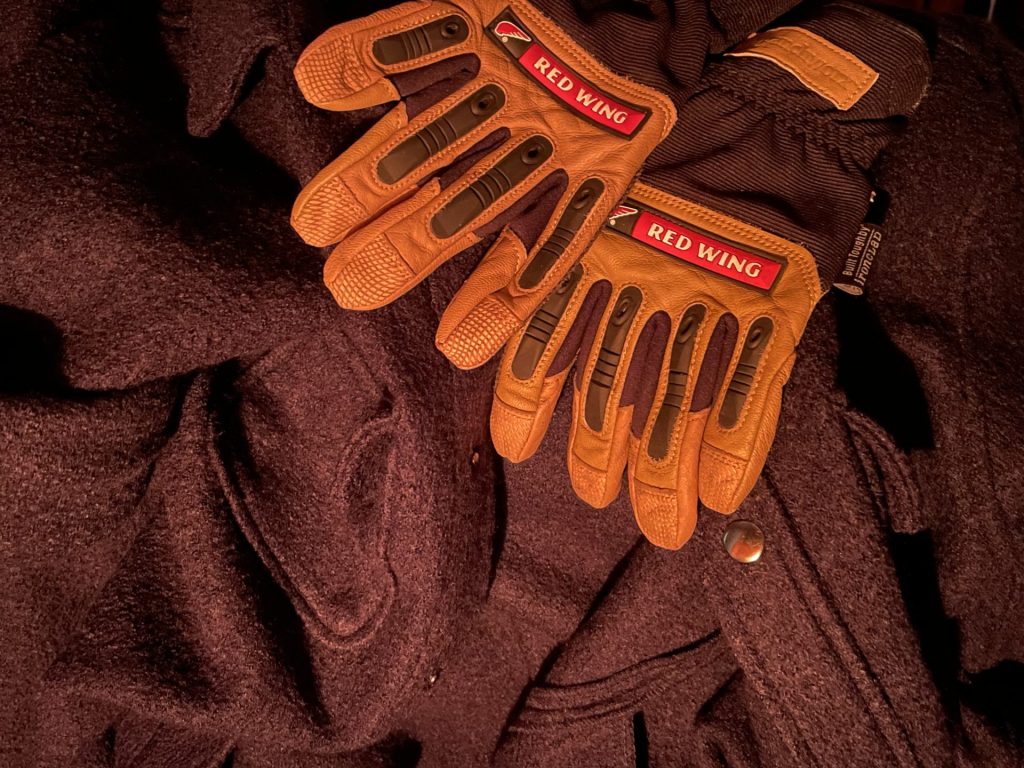
“What good is the warmth of summer, without the cold of winter to give it sweetness?” ~John Steinbeck.
Right now, as I write this, on Christmas Eve Eve, the temperature in my part of the country is 9℉, and -15℉ with the windchill. It is almost never this cold here, even in the winter. There are only a handful of days that I recall in my life that were below zero here.
So, it seems like it’s high time to cover a topic that I’ve been meaning to cover since I started this blog. It hasn’t been convenient yet to write about this, but it seems like the perfect season.
That being said, let’s talk about why wool is the natural material that your clothes should be made from – through all seasons.
1. It’s an excellent thermoregulator, so you can wear it comfortably in both summer and winter
Even though I think this is one of the least powerful cases in favor of wool, I want to lead with this, because it’s one of the first things I hear people say.
“Wool is uncomfortably hot! You can’t wear it in the summer!”
Well, you can think that, but my experience has consistently suggested otherwise, and one of us has to be wrong.
This is like when fishermen that have never eaten pickerel tell me it’s not good to eat. Thanks, but my own experience is more useful to me than whatever you read on a forum once, or got from a friend of a friend of a friend’s brother that you never actually met and don’t know.
I wear wool socks and wool shirts all year long, including in the summer. This doesn’t mean I wear my heaviest wool in the hot months, and to be true, wool can absolutely be too hot – but that is not necessarily the case.
Light wool socks and shirts actually wick moisture away from your skin, so even when you sweat in them, it won’t feel soggy and miserable the way cotton does. And, you know how it feels when you sweat in a cotton shirt – that thing is not going to dry for as long as you’re wearing it.
Wool does not get like that. Cotton absorbs water, whereas wool adsorbs it. WIthout getting into the details (absorption is a physical process and adsorption is chemical), this means that cotton that gets soaked feels wet, whereas wool does not. In fact, wool can absorb up to 40% of its weight (or so I read) without even feeling wet.
If you don’t believe me, just get yourself a nice pair of wool socks and wear them this summer. I’m willing to bet you won’t get overheated and even if you’re sweating in the heat, the wool will keep you feeling more comfortable.
(By the way, one more note about wearing wool in the summer: wool is said to possess certain UV-protective qualities, too. I’m not in any way suggesting that you skip the sunscreen, but allegedly wool can help.)
2. Wool Is Warm

While not all grades of wool are created equal, wool is one of the best insulators that money can buy. It’s leagues better than cotton and while I’m willing to admit it’s conceivable that a synthetic insulator could be devised that rivals it, I’ve yet to see what that synthetic is.
Which means, in a nutshell, wool is just about the best insulator that money can buy.
Similar to down feathers, wool fibers trap small pockets of air, which is a terrible conductor. These tiny air pockets create a small cushion between you and the cold air outside your jacket – keeping you warmer.
3. Cotton kills.

This one is probably the most important aspect of wool which gives it a very important advantage over cotton fibers.
Let us not forget that wool actually evolved to keep the sheep warm. It is warm for a reason, and this makes it a good insulator. Cotton plants did not evolve cotton fibers to keep them warm. These fibers cushion and disperse the plant’s seeds.
Do you want to be warm, or do you want to be dispersed?
Beyond that bit of rhetorical smart-assery, it’s clear that wool is a far better insulator than cotton.
But there is another technicality that you need to understand here, especially if you live in a cold climate and spend time outside in the winter.
We outdoorsmen have a saying, which is “cotton kills.”
This refers to the absorbent capacity of cotton, which is prodigious. Cotton can apparently absorb up to 70% of its weight in water – and it will hold it for a long time once it absorbs it.
This is important to you because if you are wearing cotton clothing – such as pants or socks or a jacket – when you’re outside in the cold, and you get wet, you are in serious trouble. Wet cotton clothing will suck heat out of you until you literally freeze to death.
If it doesn’t get too cold near you, that’s all well and good. Probably, no one is freezing to death wearing cotton in Florida. I can understand that.
But here, and north of me where it actually gets cold in the winter, cotton is a no-go for winter wear.
4. Felted wool clothing can be completely waterproof.

Let alone the fact that cotton will freeze you pretty expediently when it gets wet, how about the fact that when felted, wool can be made entirely waterproof.
Not all felted wool is waterproof, but when felted tightly and presented in a dense fabric, some felts are completely waterproof.
Like, so waterproof that you can use it as a vessel to contain water. Let’s consider a historical example, Stetson’s Boss of the Plains, which was the original cowboy hat.
These hats were made of felted wool and were so waterproof that they could be used as a makeshift trough for watering a horse.
It also meant that these hats would effectively keep rain and snow from reaching the head of the wearer, which, you guessed it, kept them warmer.
Felted wool capes and overcoats can exhibit these qualities, which will keep you warmer and drier even in the most inhospitable conditions.
You can forget about that with cotton, and pretty much forget about it with synthetics, too.
5. Wool is mechanically much tougher than cotton.

Another big considerable advantage of wool is that it’s way tougher than cotton. This becomes important when you’re wearing wool clothing out in the field and are really rough on your clothing.
Not to suggest cotton can’t be made tough. In fact, some cotton fabrics, like denim and duck canvas, are rock solid. But, the thing is, if you made the equivalent fabric from wool, it would be way tougher.
All fibers fail and crack from stress. Think about a piece of metal wire as a surrogate, metaphorical wool or cotton fiber. You can stretch and bend that metal wire. You can even fold it over on itself a few times.
But each time you bend the wire back and forth, you weaken it a little bit. If you keep bending it back and forth, eventually it’s going to snap. An annealed steel wire can usually be bent back and forth between 5 and 20 times before it fails (breaks.) Cotton and wool can be stretched and bent back and forth a bunch of times, too, but eventually they will also cracked.
“Nonsense,” I can almost hear you claiming. “Fabrics are soft, they don’t crack!”
Well, yes, but actually no, because I’m talking about the fibers at the individual scale, and at this level, wool fibers have the advantage over cotton as well.
I’ve read conflicting report here, but I’ve seen figures suggesting that cotton fibers can bend back and forth anywhere between 2,000 and 4,000 times before they fatigue and crack.
Wool, by contrast, is so much tougher. I’ve also read conflicting reports, but the estimates I’ve read suggest that wool fibers can stretch back and forth anywhere from 20,000 to 40,000 times before the fibers fail.
I’m no math wizard, but I know that means that if these estimates are accurate, wool is more durable than cotton by a factor of 10. That’s not nothing, and it’s something you’ll be glad of if you slide down a few too many muddy banks or push through briars and brambles on the regular. Cotton may make good clothing, but wool will last longer.
Here’s another thing about wool fibers that you may not have known, although this is somewhat less of a concern for outdoorsmen and more of a concern for fashion divas. One of the reasons all the high-end suits and clothing are made from wool is because wool fibers are also springy and naturally hold their shape. Cotton wrinkles, shrinks and loses its shape easily – wool does not.
6. Wool stays warm, even when it’s wet.

As I mentioned above, when cotton gets wet in the cold, it can be downright deadly. Wool, by contrast, retains a remarkable amount of its thermal insulative abilities even when it is sopping wet.
This makes wool the material to be wearing in cold, wet conditions. It can literally save your life.
The reason for this is actually a marvel of science. As I stated above, wool does not absorb water – it adsorbs water. Well, it actually does absorb water, but it also has the ability to adsorb, which is a chemical process whereby chemicals in the wool fibers break the hydrogen bonds holding water together, releasing potential energy.
In short, as wool dries, it actually produces heat.
So, wool has a few different things going for it here. One is that it effectively pulls water away from your skin, keeping you from feeling wet in the first place.
The second is that even when wool gets soaked, through the process of adsorption, it will actually generate heat that will keep you warm.
Having been in wet wool, I can say that it doesn’t feel like you’re wearing a heated jacket – but it doesn’t feel chilly, either. I’ve read that wool retains up to 70% of its thermal insulative properties when wet, and I’d say that figure is probably pretty accurate.
You have a choice here. Wear cotton garments that will chill you (dangerously) to the bone when they get wet, or add some wool garments to your wardrobe that will keep you warm not only when the mercury falls off the edge of the map, but even if you get wet.
Seems pretty simple to me.
7. Wool is
not itchy. (Well, it can be, but don’t assume that just because something’s made of wool it is.)
One of the biggest things that I hear from others, in terms of objections to wool, at least – is the supposition, asseveration even, that wool is itchy.
Don’t get me wrong. Wool can be itchy. Wool can be dreadfully itchy. But you’re only fooling yourself if you don’t admit and recognize that other fibers can be just as uncomfortable if not worse.
This is all about the grade of wool and how the wool fibers are laid in the fabric. For instance, merino wool, which is a very fine grade of wool with extremely fine fibers (sometimes marketed as superfine wool) is almost always itch-free. The fibers are just too thin, and lack the structural integrity to “poke” your skin, which is what causes itchiness in the first place.
Other grades of wool, like angora wool, which comes from rabbits, or cashmere or alpaca wool, are very soft and itch-free as well. I’ve also heard of a type of wool known as qiviut (which comes from a musk ox) which is supposed to be very soft as well. That said, I have no personal experience with qiviut and it is prohibitively expensive.
My point is this. If you’ve had bad luck with wool in the past, don’t chalk it up to all wool being itchy. This just isn’t true. Make it a point that the next time you spend good money on wool you aren’t throwing good money after bad. Buy wool in a finer grade, such as merino, and see if that doesn’t solve your problem.
8. Wool cleans itself
If you look at a wool fiber under a microscope, you will see that the fiber itself consists of many layers of overlapping scales. This unique scaly structure gives wool an even more unique ability: to clean itself.
That’s right. Wool fibers actually possess the innate ability to clean themselves, and all you have to do is wear them.
This sounds counterproductive, since, after all, wearing clothes is how they get dirty. But wool has a trick up its proverbial sleeve.
Let’s say you’re wearing your favorite wool shirt or jacket and it gets some mud on it. As you wear the shirt, making the fibers stretch, at the microscopic level, the fiber, as it stretches and bends, will rub against itself. All of those scales I mentioned overlap each other and help the fiber literally scrub away any dirt that clings to the surface.
I quite seriously was not issuing a hyperbole when I said wool actually cleans itself.
This awesome feature of wool keeps woolen garments looking and feeling cleaner and fresher for longer. You can’t do that with cotton and you certainly can’t do it with synthetics!
9. Wool is naturally fire retardant

Alright, let’s start with a disclaimer. Wool will burn. It’s just not easy to get it to do so.
Cotton is a plant fiber. Just like jute and sisal, it practically wants to burn. This is the sort of fiber you can separate and use for tinder. It’s precisely the reason that you can scavenge your dryer’s lint trap for a scrumptious harvest of tinder after you’ve done a load of cotton laundry. This should hardly come as a surprise.
Wool is not like this. Sparks that land on wool clothing will typically not catch and if they do, wool is naturally self-extinguishing. It’s near impossible to get felted wool to catch fire. It just won’t burn well.
I’m no chemist, but I am familiar with the fact that wool does not want to burn, so for your edification I did a spot of research before I published this. Apparently, it has something to do with wool’s high moisture and nitrogen content. Thanks to these, wool requires a very high input of oxygen (and perhaps a high ignition temperature) to sustain combustion.
What this means for you and me is that wool clothing will not readily burn, which makes wool a suitable fiber for those that work in areas where they will be exposed to sparks or flames.
While wool is better than cotton on this front, where it really scores high marks is on its superiority to synthetic fibers like rayon and polyester. These cheap fibers may not burn well, but they will melt.
Now, this has never happened to me, but I’ve read that clothing made from these synthetics has been known to melt and stick to the wearer, causing or exacerbating burn injuries.
I’ve never witnessed it, but I also don’t want to. I’ll stick with wool.
10. Wool retards the growth of microbes
One more amazing thing about wool is that it is naturally antimicrobial.
Wool is coated in a waxy substance (and contains) a hydrocarbon known as lanolin, which itself lends this credit. Lanolin is naturally antimicrobial and inhibits the growth not only of bacteria but also of mold and mildew. Lanolin also helps wool shed water easily, which also inhibits the growth of microbes.
Now, for most of us, this antimicrobial property has little to nothing to do with staving off the potential for infections. That’s a minimal concern for most people anyway.
There’s a separate and arguably more practical reason that this makes wool attractive as a clothing fiber: wool doesn’t smell.
As you may know, if you wear cotton (or god forbid, a synthetic like polyester) in the heat, it will smell terrible after only a few hours. This is because these fibers trap moisture which then allows bacteria to breed like wildfire.
And is it these bacteria which make your clothes smell bad.
Fortunately, wool packs this advantage over cotton and synthetics, too. It stays cleaner for longer and won’t smell as readily as cotton or synthetic garments.
11. Cotton smells, and wool does not.
I wanted to give this its own separate segment, but I pretty much already went off the rails and covered it in the last section. I got zealous, but these two traits are interrelated so it makes sense.
See above for the explanation.
12. Even environmentally, wool makes the most sense.
Now, when it comes to wool vs. cotton, the two are theoretically evenly matched. In the interest of fairness, I might even be willing to give the nod to cotton because cotton can (probably) be produced using fewer input resources than wool.
They are both sustainable and renewable and wool can be harvested without any injury to the sheep. But I’ll grant that cotton may be less resource-intensive to produce so it might have the edge.
But when it comes down to wool vs. synthetics, there’s hardly a contest. Some synthetics like rayon and viscose are produced from plant precursors, but the majority of synthetic fibers like polyester, nylon and acrylic are not.
These are created predominantly from petrochemicals. They are not sustainable, not renewable, and either not recyclable or so prohibitive to recycle that no one does it. They also, like cotton, fall to all of the disadvantages listed out, carefully and lovingly, throughout the previous several pages of this article.
So, to add insult to injury, after amassing all of these other advantages, wool takes the cake over these other fibers because it is not only better, but it is sustainable and renewable.
Have I Made My Case? Go Get Yourself Some Wool Clothing
So, if you’ve been putting it off because wool is more expensive (and it is, I make no pretense about that) think it over again
Wool is warmer, more durable, will last longer, and overall more practical. Once you wear wool you won’t go back.
It’s hard to beat that range. Both the majority of my outdoor clothing and my formalwear are predominantly made of wool. All things considered, it just makes the most sense.
Stay warm.
~The Eclectic Outfitter
Always get myself a nice sweater, hat or other clothes made of wool. Wool is QUALITY and it LASTS.
Hell yeah, man. I have tons of coats, shirts, gloves, hats, and other gear made of wool, but I don’t need to get into the why – I think I covered that in this post.